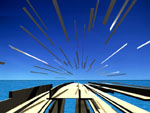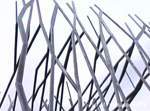Three Kinds of Flow / Three New Stations
- 2004
- 10th Kumamoto Artpolis Advancement Award
- 2008
- Public Architecture Award (Japan)
Shinkansen / ShinMinamata Station2004
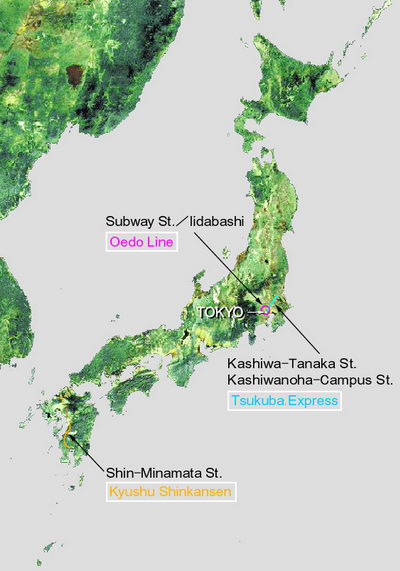
Closed but Open / Architecture as State
To stop, keep running.
Public Architecture Award
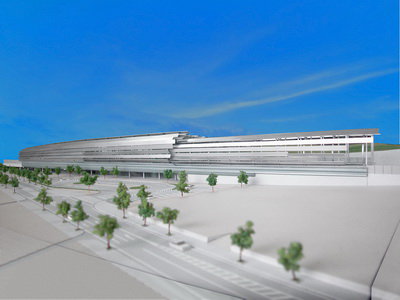
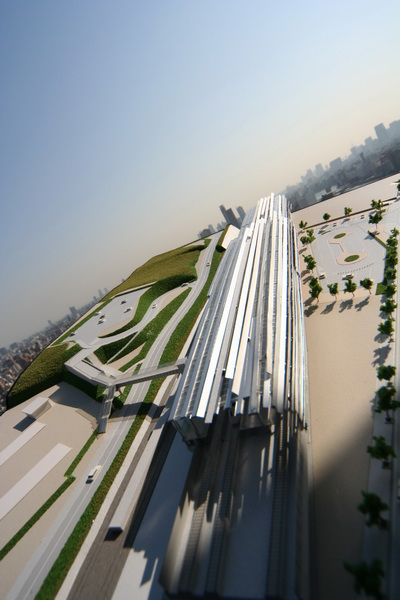
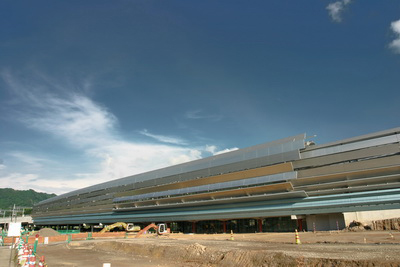
Japan's famous Shinkansen high-speed railway network was opened in 1964 between the major metropolitan areas of Tokyo and Osaka.
It was subsequently expanded to serve cities throughout the country.
The Shinkansen has now reached the southern island of Kyushu, with half of the 257-km southern segment opening in the spring of 2004. Four stations were built for this segment.
One of them is the ShinMinamata Station in the city of Minamata.
Closed but Open
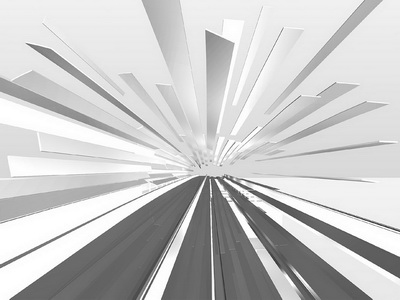
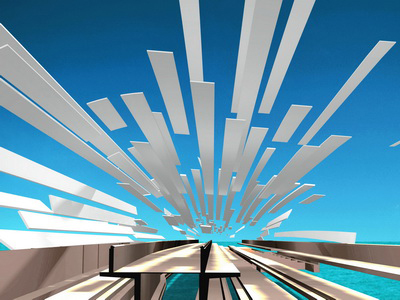
Architecture is normally closed in by walls. It is entered through doors.
But a railway station has no doors. Trains roll through it on the platform level. The interior continues out to the exterior. Nevertheless, it is not a completely open space. Platforms need to provide protection from rain, wind, and sunshine, and to prevent noise from escaping outside as the trains pass through. Railway stations seem to be open, but are actually closed. They seem to be closed, but are actually open. They are special spaces, unlike the closed package of normal architecture.
This work attempts to clarify the special character of railway station space.
Gliding Speed / Continuous Movement
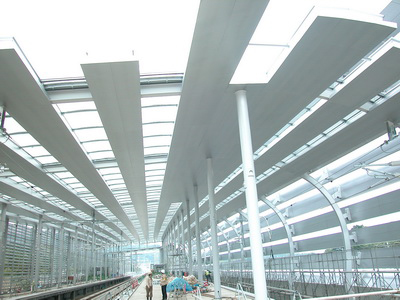
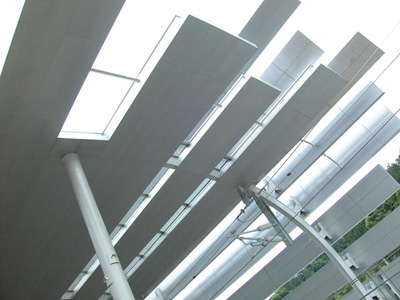
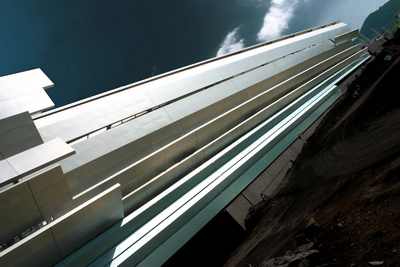
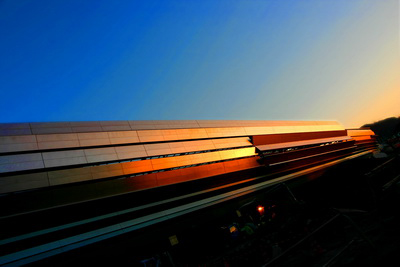
The roof and walls of the station consist of a collection of rectangular unit pieces which continue into each other without distinction.
The design process began by imagining that a number of the unit pieces were gliding past and then frozen at a particular moment.
The shape and state of the structure at this moment were examined to determine how much rain could be kept out, how much wind would blow through, how much shade would be provided, and how much noise from passing trains could be kept from escaping. After numerous repetitions, a state which met the requirements was chosen and this became the design.
The design is a frozen state.
If it were unfrozen, it would move on to the next state.
Instead of fixed and finished architecture, it is one moment in a trajectory.
The implications extend beyond the design concept. In fact there are plans to extend the platforms after the station opens. Therefore, extensions were provided for unit pieces on the station plaza side and for the structure as a whole. Pieces which are not present when the station opens will emerge at the time of the extension.
Unfreezing and restarted movement will occur in the real world, not merely in the realm of virtual thought experiments.
Ripples of Light / Variations of Light
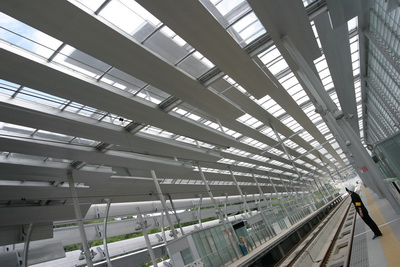
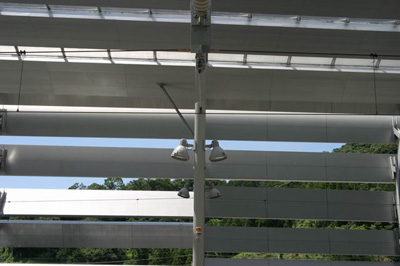
The various pieces running parallel to each other have different surface angles. Different angles lead to different reflections of light. Pieces with different angles reflect sunlight in different ways, according to the time of day and the season. People will see gleams of different types, depending on the time and the approach they take to the station.
This variation, like a sun clock, is another kind of movement.
It also a way to give a brighter tone to the main entrance to the station, which faces the north. The shimmering variations of light may also remind some of rippling sunlight on the waves of the beautiful Yatsushiro Sea off Minamata.
Architecture as State
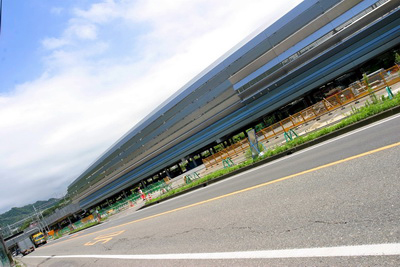
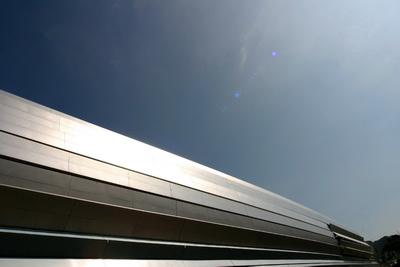
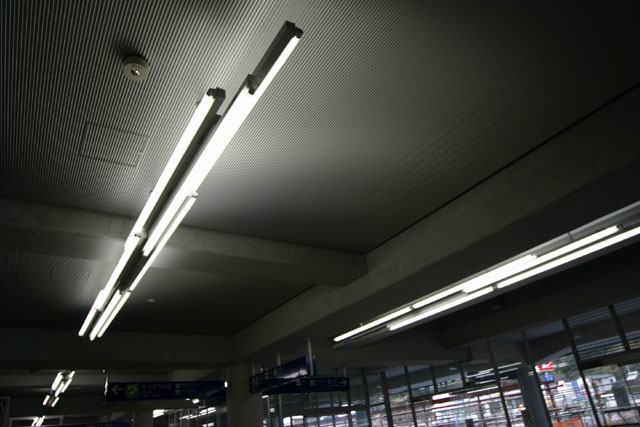

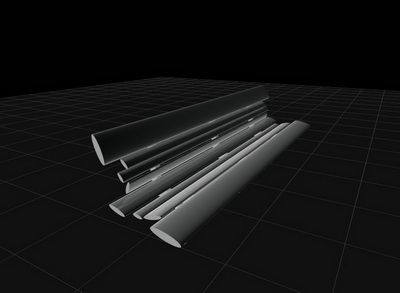
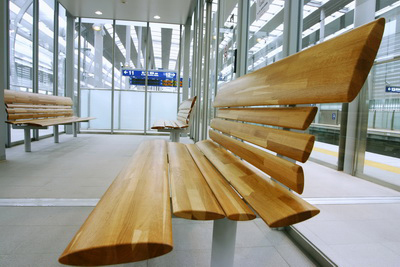
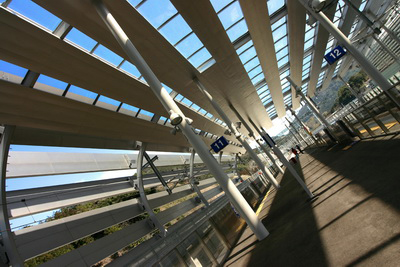
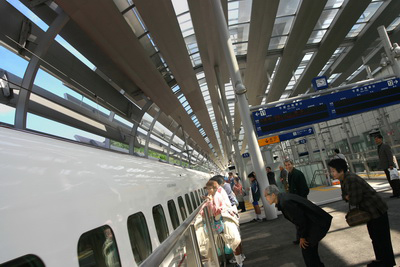
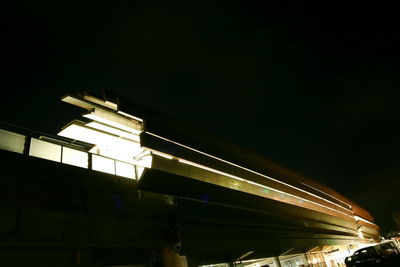
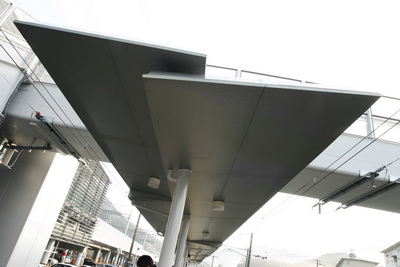
Instead of being a large box enveloped by a continuous skin, this architecture is a collection of independent unit pieces.
The whole is composed of many simple pieces operating to a certain extent according to their own rules, in such a way that given conditions are fulfilled.
The intent was to generate "architecture as state".
Although in this case computer programs were not involved, this way of thinking is related to the Induction Design method, in which solutions to given conditions are found though self generation.
- Movie
